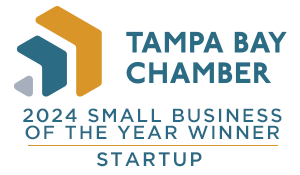We all know, fostering a collaborative and innovative environment is critical for sustained success. However, two troubling trends often emerge: "groupthink" and constant opposition. Both can stifle growth, hinder decision-making, and create a toxic workplace culture. Understanding the challenges and implementing strategies to address them is essential for any business leader.
The Challenge of Groupthink
What is Groupthink? Groupthink occurs when team members prioritize harmony and consensus over critical analysis and diverse perspectives. This often leads to decisions that go unchallenged, potentially overlooking better alternatives or failing to identify risks.
Symptoms of Groupthink:
- Lack of Innovation: Creativity and innovation suffer when everyone agrees without questioning.
- Poor Decision-Making: Without critical evaluation, decisions may be based on incomplete or biased information.
- Overconfidence: A false sense of security can develop, leading to risky decisions without considering potential downsides.
- Suppressed Dissent: Team members may feel uncomfortable voicing dissenting opinions, fearing backlash or isolation.
Addressing Groupthink:
- Encourage Diverse Perspectives: Foster an environment where diverse opinions are valued. Encourage team members to share their thoughts and challenge ideas constructively.
- Create Safe Spaces for Dialogue: Implement regular brainstorming sessions where team members can freely express their ideas without fear of judgment.
- Rotate Leadership Roles: Allow different team members to lead discussions or projects. This can introduce fresh perspectives and reduce the CEO's dominance.
- Seek External Input: Engage with external advisors or consultants to provide unbiased feedback and introduce new ideas.
The Challenge of Constant Opposition
What is Constant Opposition? On the other end of the spectrum, constant opposition occurs when team members habitually challenge every idea, creating an environment of conflict and stagnation. This can stem from a lack of trust in leadership, personal grievances, or a desire to assert dominance.
Symptoms of Constant Opposition:
- Decision Paralysis: Continuous disagreements can delay decision-making and hinder progress.
- Low Morale: Persistent conflict can lead to frustration and lower team morale.
- Fragmentation: The team may become divided, leading to a toxic work environment and reduced collaboration.
- Inefficiency: Excessive time and energy are spent on resolving conflicts rather than focusing on productive work.
Addressing Constant Opposition:
- Establish Clear Goals and Vision: Ensure that the team understands and aligns with the company’s goals and vision. This common purpose can help unify efforts and reduce unnecessary opposition.
- Foster Open Communication: Create channels for open and respectful communication. Encourage team members to express their concerns constructively and work towards solutions.
- Implement Conflict Resolution Mechanisms: Develop processes for addressing conflicts effectively. This could include mediation, structured feedback sessions, or conflict resolution training.
- Build Trust and Respect: Cultivate a culture of mutual respect and trust. Recognize and address underlying issues that may be causing persistent opposition.
Striking the Balance: Constructive Dissent
The goal is to strike a balance between groupthink and constant opposition, fostering an environment of constructive dissent. This involves encouraging healthy debate and critical thinking while maintaining respect and cohesion within the team.
Strategies for Constructive Dissent:
- Encourage Critical Thinking: Promote a culture where questioning and critical analysis are valued. Teach team members to evaluate ideas based on their merits rather than the source.
- Set Ground Rules for Discussions: Establish guidelines for respectful and productive discussions. Ensure that debates focus on ideas, not individuals.
- Reward Innovation and Problem-Solving: Recognize and reward team members who contribute innovative solutions and engage in constructive problem-solving.
- Lead by Example: Leaders should model the behavior they wish to see. Demonstrate openness to feedback, a willingness to consider alternative perspectives, and a commitment to respectful dialogue.
Both groupthink and constant opposition present significant challenges for small businesses. By understanding these dynamics and implementing strategies to foster constructive dissent, leaders can create a more innovative, collaborative, and productive workplace.




